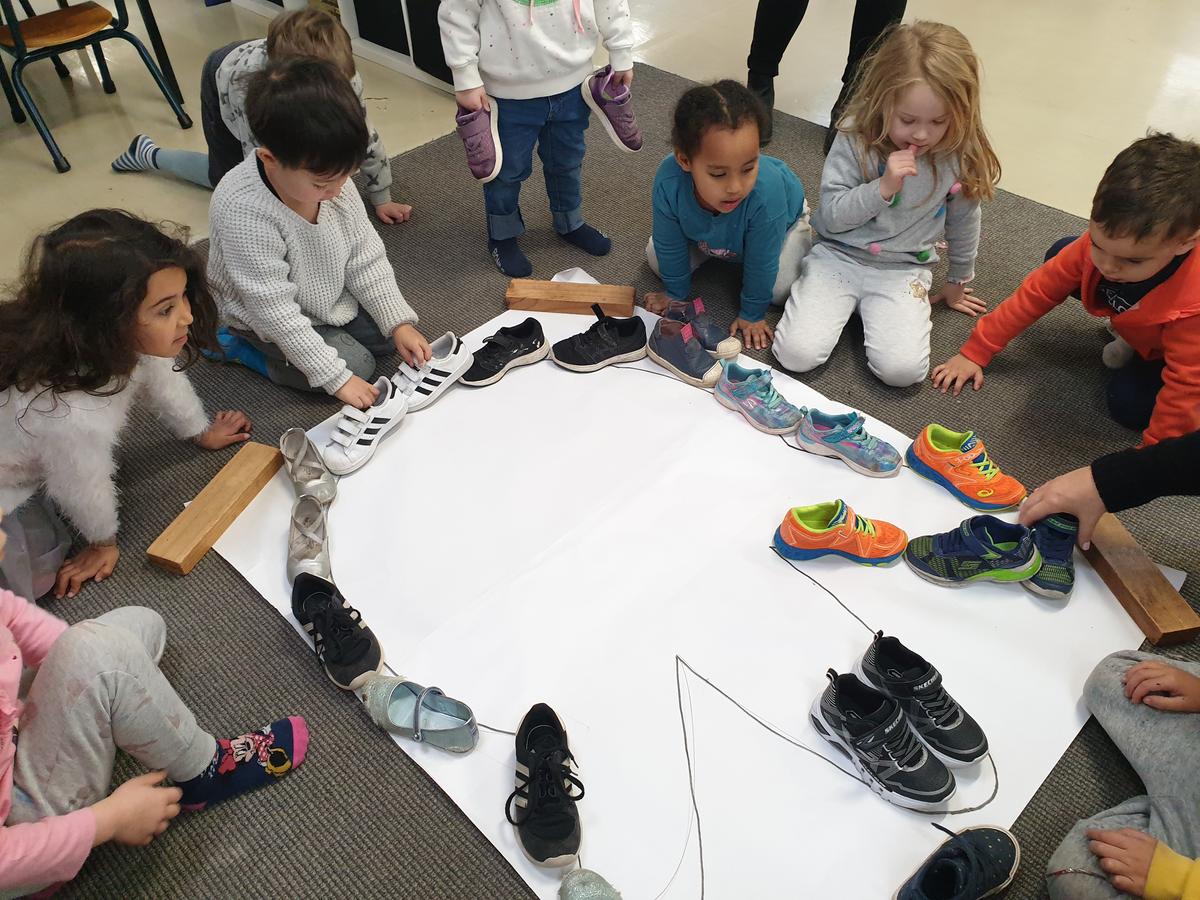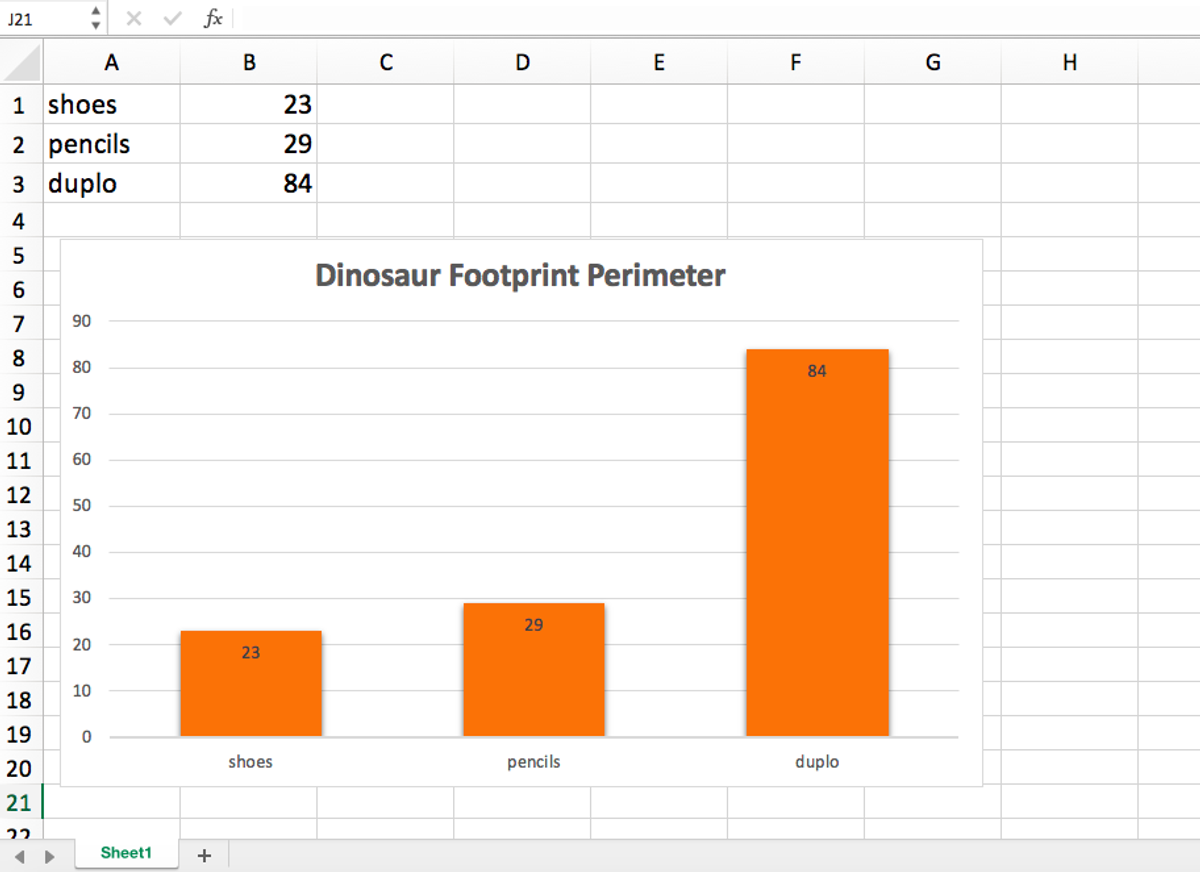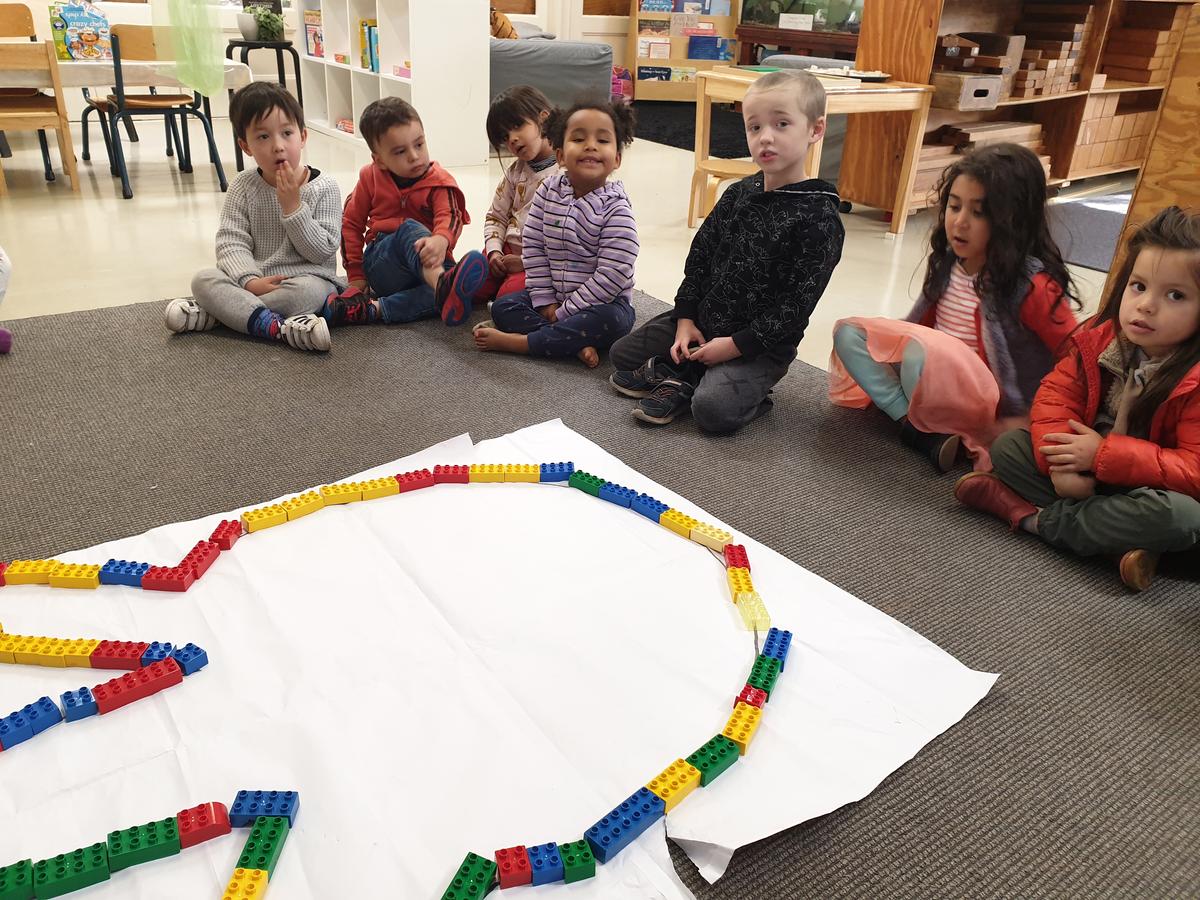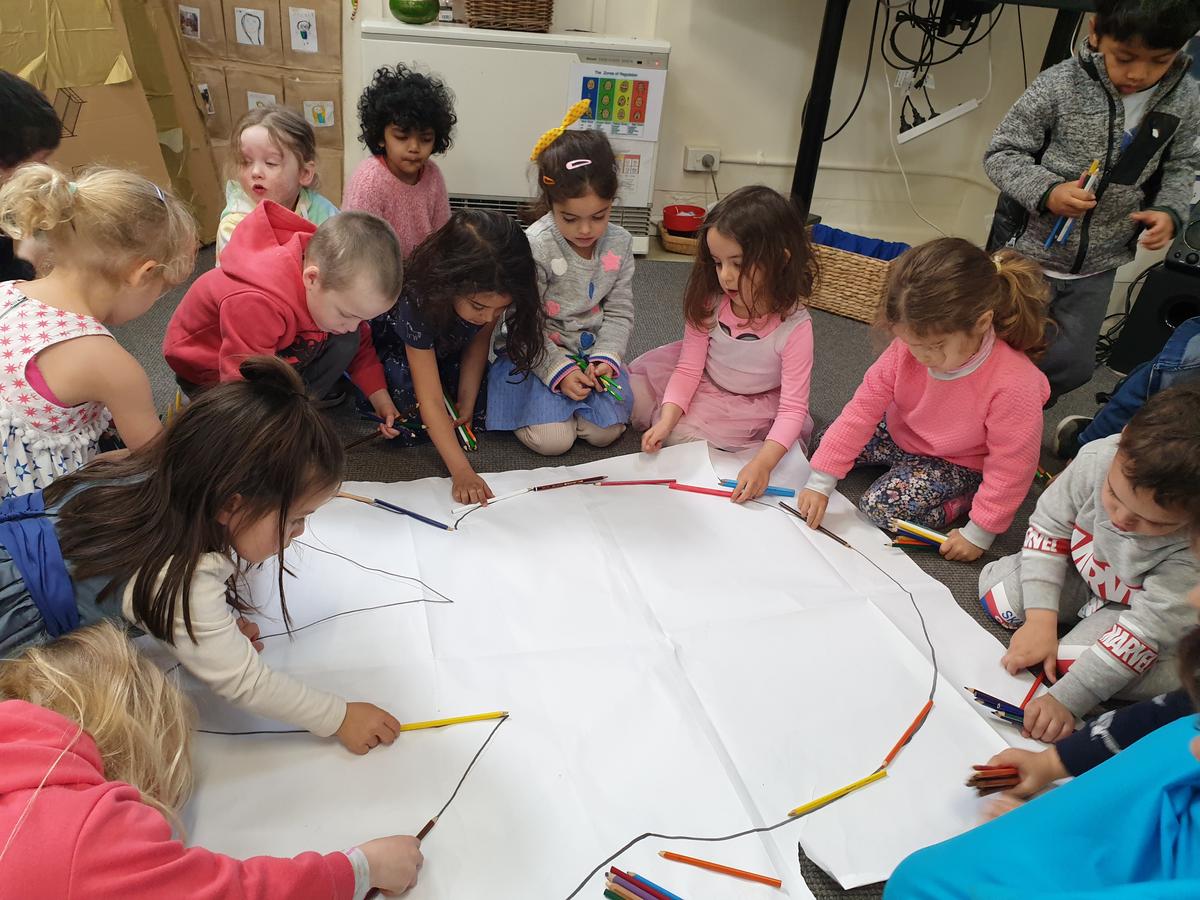Kindergarten
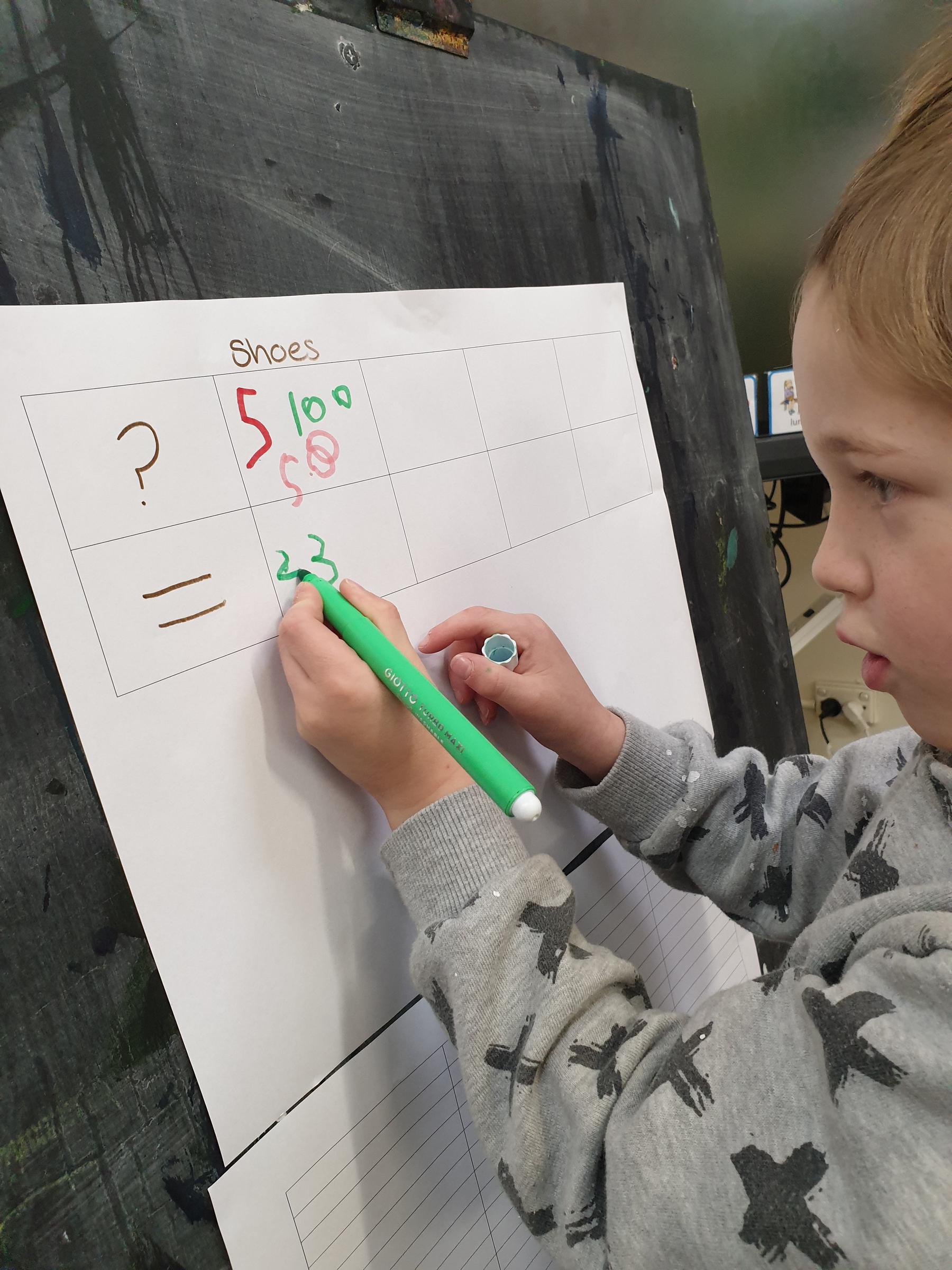
Measurement
In Kindergarten, we’ve been developing our understanding that there are many ways to measure something. We’ve been exploring forms of measurement, estimating, writing and recognising numbers, counting, using mathematical language and; recording, translating, and interpreting data. We are numeracy superstars!
One day, we discovered that a T-rex had left a giant footprint in our Kindergarten! We grabbed a ruler and a tape measure and tried to measure around the outside – the perimeter. That didn’t work, the footprint was too curved. What else could we use to measure? What could we use that doesn’t have numbers written on it?
We thought about how the T-Rex’s foot was bigger than our foot, so perhaps we could use our shoes!
First, we needed to estimate. We used a table with a question mark to denote our estimates, and an equal sign to show the actual answer. We had some great discussions about what these symbols meant.
“A question mark means you don’t know.”
“Equals means it’s the same as.”
We made three estimates, writing the numbers into the table. We gave each other helpful suggestions on how to write the digits; “eight is like a snowman, two circles on top of each other!” We then voted on which estimate we thought would be the most accurate. Then it was time to take off our shoes and start measuring!
We counted up the shoes, then recorded our results via two methods – handwriting and on a spreadsheet. We enjoyed taking turns typing on the laptop!
We discussed what we would like to measure with next – pencils, then Duplo, and repeated our process each week. Our visual assessment skills developed, and we were only one off on our estimate of how many pencils would fit around the footprint!
When we had all the data entered into our spreadsheet we translated it into a graph. We used the graph to interpret our results, discussion questions such as:
Which form of measurement used the least items and why? “Shoes the rectangle is the smallest…maybe because shoes are bigger than pencils and blocks?”
Which two results were the closest? “Shoes and pencils because the rectangles are almost the same size.”
In between the group project, we conducted our own measurement investigations on smaller dinosaur footprints, and around the Kindergarten room. We recorded our data in many creative ways using shapes, numbers, letter and drawing.
The children were so curious and engaged throughout the project, and it has been wonderful to see them using the numeracy concepts in their play and conversation. We haven’t spotted the T-rex who left the footprint – but be sure to keep an eye out!
Poppy Woodhouse
Kindergarten Teacher

